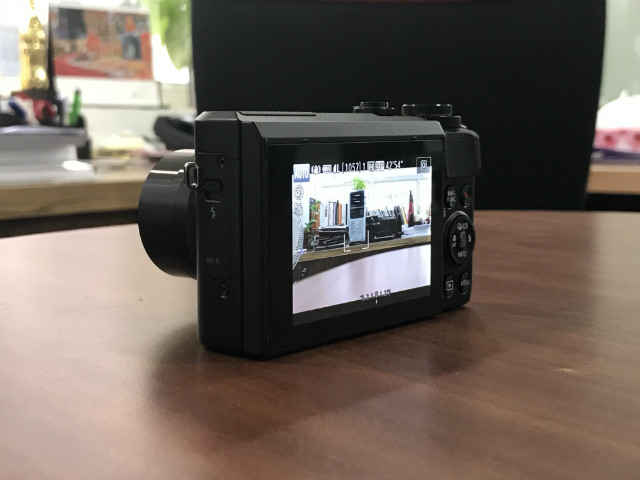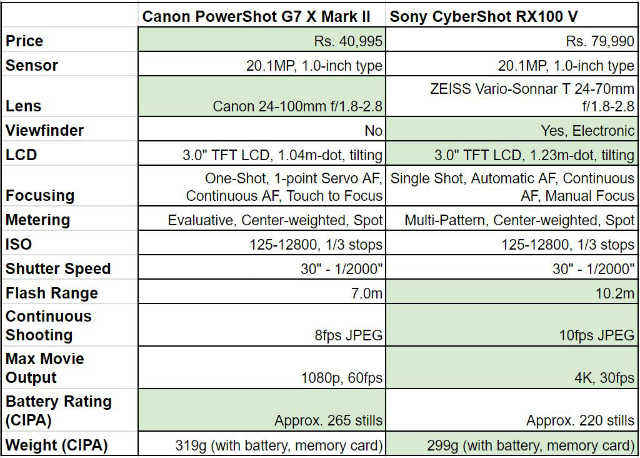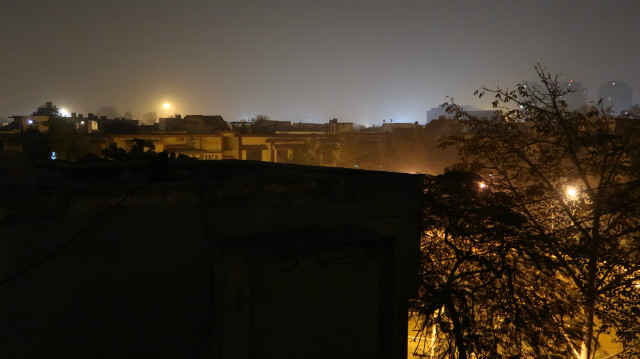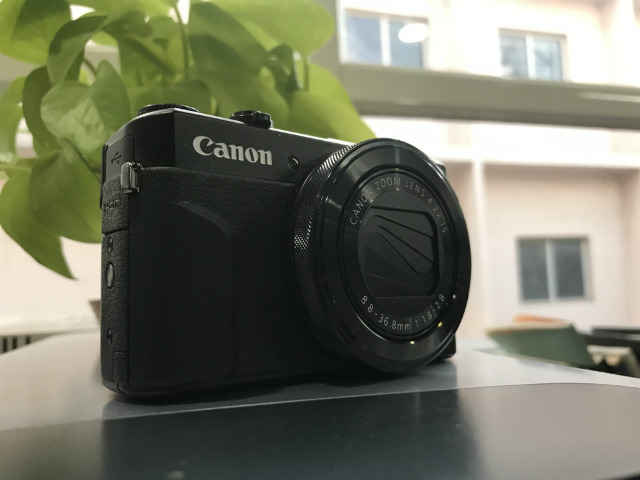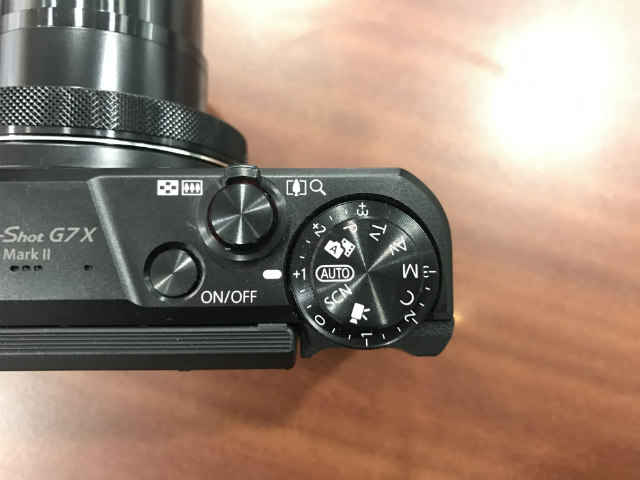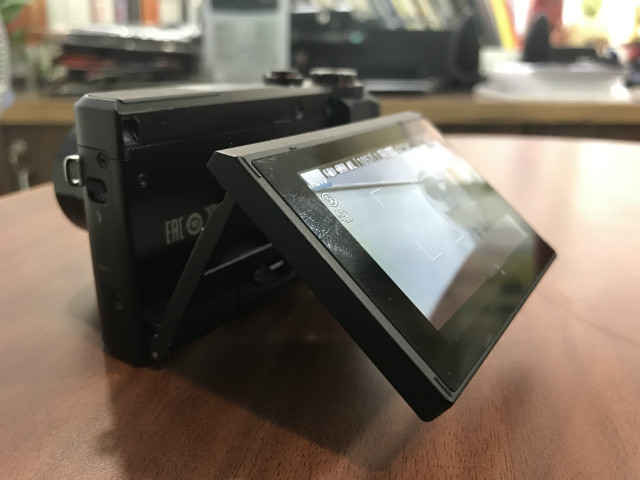Canon PowerShot G7 X Mark II Review : A good all-round performer
The Canon PowerShot G7 X Mark II is a great compact shooter. It delivers good colours, details and overall imaging performance, along with a few nifty features, upgraded dials and toggles and decent battery life, all at a compelling price point. While the Sony RX100 V does have a few more features up its sleeve, it retails at nearly double the price, which lends superior value for money to the G7 X II, which is priced at an MRP of Rs. 40,995.
For those who do not want the bulk and interchangeable lens factor of a DSLR and need a camera that delivers competent imaging quality in a small, pocketable frame, the Canon PowerShot G7 X Mark II is highly recommendable.
The PowerShot G7 X Mark II here, Canon’s second-round attempt at Sony’s behemoth RX100 lineup, is a pretty solid camera on paper. There are a number of notable upgrades, and Canon wants the G7X Mark II to be a camera that everyone would consider to be an essential in their travel kits. Does it hit the right chords?
Specifications
The two present generation compact cameras right now are the Sony CyberShot RX100 V, and the Canon PowerShot G7 X Mark II. Before we begin talking about the performance on offer, we look at what each of these have on offer.
While the RX100 V does provide more in terms of continuous shooting, highest video resolution and even an electronic viewfinder within the compact, pocketable frame, the Canon G7 X II provides an equal bang for the buck on face of competition. As against older compatriots like the Sony RX100 IV, Canon’s inclusion of the latest generation DIGIC 7 image processor is a benefit, as it gives a good edge in terms of processing, autofocus and more.
Performance
Colour, saturation, white balance
The colour production of the PowerShot G7X Mark II is largely typical of Canon’s warmer tone. Colours look sharp, although reds seem to get an unnatural amount of favour. Yellows, blues and particularly greens look slightly undersaturated, particularly in rich, vibrant compositions. However, they do not look bleak, and you can opt to shoot RAW for post-shooting rectification. The new DIGIC 7 processor allows better, faster shooting of RAWs, and the G7 X II also produces lesser noise and better dynamic range, all of which lead to making this camera one of the most useful compacts out there today.
To clarify, the colours are fairly accurate and good to look at, losing out on a certain richness of tone in its JPEGs. Saturation levels are biased towards high colour temperatures, and the white balance algorithms work fairly well. Here too, the camera tends to adjust to warmer temperatures, which can be rectified by using the custom manual presets. Despite the better dynamic range, the Canon G7 X II produces a slightly limited range of colours, but you only realise this when you shoot in an extensively vibrant atmosphere, and compare results parallely.
For reference, seeing that the average Indian user is more inclined towards a basic DSLR than a premium compact, our comparison between the Nikon D3400 and the Canon PowerShot G7 X Mark II revealed the differences that show slightly limited dynamic range.
Details, sharpness, noise and ISO
Canon has significantly improved the level of details, sharpness, noise reduction and ISO performance over its previous generation compacts. There is decent levels of coarse details that work in wider frames, although macro shots do reveal the lack of fine details. The improved sharpening here works for most objects, although it does appear rather coarse upon finer inspection.
This also lends edgy outlines in certain cases, particularly in falling light. Despite that, the G7 X II is actually a fairly remarkable performer in terms of detailing and object sharpness in most scenes. You also get a dedicated Picture Styles mode to adjust sharpening strength, feathering and threshold, allowing control over sharpening radius.
Yet another impressive element is noise reduction, and the Canon G7 X II does fairly well in low ISO shots. Lowering noise reduction levels do not ruin photos with grains, and even in low light, although soft edges are recurrent, the G7 X II manages to retain colour accuracy, not rendering unusable noise levels beyond ISO 3200.
ISO performance is also decent, and you can shoot comfortably at up to ISO 1600 without much difficulty. Low ISO performance does not generate banding in uniform colours on low light, and flash range also extends up to 7.0m at ISO 100, which is fairly decent. You can also adjust the angle of the pop-up flash module to bounce flash against walls, which is a neat addition.
Autofocus
As before, the autofocus performance still has a couple of weak areas. For one, letting go of the half-shutter-press while tracking a subject leads to the camera failing to recognise subject movement, and takes significantly long to attempt refocus. The phase detection pixels also struggle with macro focusing consistency, and gets particularly confused if there are distinct shapes or sharper colours in the background.
Full continuous autofocus on the Canon PowerShot G7 X Mark II can be obtained with the 1-shot Servo AF, and this works fairly well. Constant subject tracking works well with swift moving objects. However, this can significantly reduce battery life if you use it extensively. The autofocus performance is fairly decent, and just in case the autofocus fails to work for you, the inclusion of a smoother rear ring facilitates easier manual focusing.
More camera samples
Build, Design and Ergonomics
The Canon PowerShot G7 X Mark II is marginally more compact than its predecessor. In what is an important little addition, it adds a small grip to the right of the camera body. This makes it easier to hold. The power button, zoom toggle, mode and EV compensation dials are on the top, and are fairly easy to operate.
You also get a small thumb grip on the rear that makes shooting much easier. There is also a shortcut to assign a specific function to the front ring, and the video recording button is placed here as well. Talking about the ring, it now gets a lock that allows it to be switched between smooth or stuttered operation. This makes manual focusing on the G7 X II significantly easier, and you can use the stuttered mode when sifting through settings.
Another neat decision by Canon is shifting the display hinge to the bottom, and it can now be tilted downward by 45 degrees, instead of just being tilted upward. All of these make the camera more ergonomic and easier to use, and its 319g weight is not too much on pockets. The design also gets more defined edges thanks to the added grip and slightly reduced bearings, all of which make it look, feel and operate quite well.
Connectivity and Battery life
The Canon G7 X II gets Wi-Fi and NFC connectivity. You will need the Canon CameraConnect app on your phone, and use it to transfer files on the go, or use your phone as a remote for the camera. For NFC-enabled Android users, choosing the NFC mode and tapping the phone on the bottom of the camera body transfers the photo being displayed on the camera LCD at that moment.
The battery cycle for the Canon PowerShot G7 X Mark II lasts for nearly 300 shots, which is somehow more than what the company advertises. This translates to about three full days of shooting with it for most casual/tourist photographers. This is fairly average, and is actually more than its prime market rival, the Sony RX100 lineup.
Bottomline
The Canon PowerShot G7 X Mark II is a great compact shooter. It delivers good colours, details and overall imaging performance, along with a few nifty features, upgraded dials and toggles and decent battery life, all at a compelling price point. While the Sony RX100 V does have a few more features up its sleeve, it retails at nearly double the price, which lends superior value for money to the G7 X II, which is priced at an MRP of Rs. 40,995.
For those who do not want the bulk and interchangeable lens factor of a DSLR and need a camera that delivers competent imaging quality in a small, pocketable frame, the Canon PowerShot G7 X Mark II is highly recommendable.

